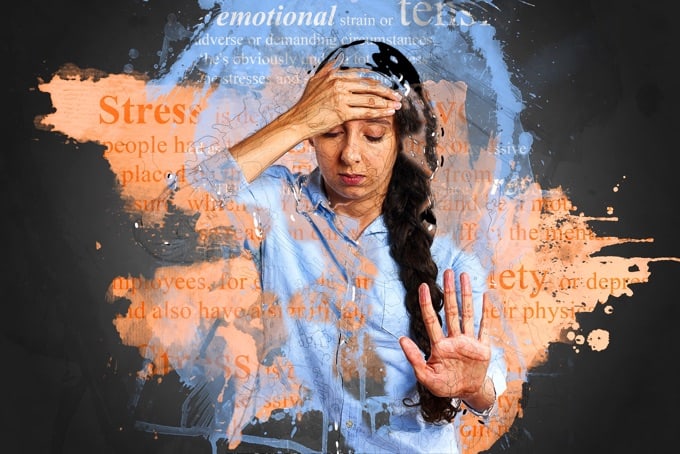It is possible to breathe away stress.

Breathing Away Stress
Breathing is so automatic though that most of us don't give it much thought.
Take a moment right now to observe your breath.
Is it fast, slow, deep, or shallow?
Are you breathing through your nose or your mouth?
In times of stress our breathing becomes especially shallow and restricted, leading to poor oxygenation of our blood, anxiety, mental sluggishness, toxin build up and a host of other symptoms.

Feeling Stressed?
How to Breathe Away Stress?
It is possible to breathe away stress.
Learning to manage stress is an important component of a balanced healthy diet and lifestyle. When we breathe deeply, we can fill our blood with oxygen and encourage our whole nervous system to relax.
Don't Miss: The Connection Between Breath, Fat & Weight Loss
And that is the tip of the iceberg. The benefits of deep breathing include:
- Increased lung capacity
- Increased metabolism (great for weight management)
- Improved posture
- Reduced tension and anxiety (great for reducing emotional eating)
- Strengthened immune system
- Toned abdominal muscles
Don't Miss: Dr. Weil's 4-7-8 Breathing Exercise You Can Do in Seconds
Just watch a baby to get a sense of how natural, deep, and full our breath is meant to be. Babies seem to breathe with their whole bodies. With some practice you can return to full deep nourishing breathing too.

Yawning Baby
Of course, if you have problems with your lungs, such as asthma, or heart disease, consult your physician before attempting yogic breathing or any type of breathing exercises. It is always best to be safe.
Related: Alternate Nostril Breathing for Calming & Balancing the Brain
Full Deep Breathing - The Details
Focused breathing exercises are an integral aspect of yoga. Deep yogic breathing is usually done through the nose, during both inhalation and exhalation.
This allows the air to be warmed and filtered, and breathing to be slowed.
With yogic breathing, your breath should expand your abdomen and your chest, not just one or the other. You breathe much deeper than usual, which brings more oxygen into your system and may cause you to become dizzy or lightheaded. If this happens just rest for a few minutes until the feeling subsides.
- When you are beginning it is easiest to practice full yogic breathing lying on your back with your feet on the floor, knees bent. If your neck is uncomfortable, rest your head on a pillow. Place your hands on your torso.
- Inhale through the nose as you expand your abdomen, then your ribs, and then your chest.
- Pause for a few seconds at the top of your inhale.
- Exhale from your chest, then your ribs and then your abdomen, drawing your abdomen in at the end of your exhale.
- Pause for a few seconds at the bottom of your exhale.
- Repeat this process several times then let your breath return to normal and take a few minutes to observe how you feel.
Work to keep your breathing smooth and steady throughout the full yogic breathing cycle. As you continue, try to lengthen your exhale, making it noticeably longer than your inhale. This is extremely soothing to your nervous system.
Once you feel comfortable with this breathing lying down, try it while sitting up and the next time you are feeling stressed—take a few minutes for some full deep yogic breathing and notice how much calmer you feel.
Here's a video demonstrating basics of this basic 3 part deep yoga breath:
You might also like...
- Yoga for Stress
- Relax & Lose Weight
- Dr. Weil's Breathing Exercise
- DoTerra Breathe Essential Oil Blend & Wisdom of Sighing
Subscribe to Get: Top 10 Reader Favorite Recipes
The Top 10 Most Popular Recipes (PDF) on Simple Nourished Living + Weekly Support Emails with Tips & Easy Healthy Recipes Not Found Anywhere Else!




Helen Badman
Love Beyond the Scales... the new WW is the best plan going.